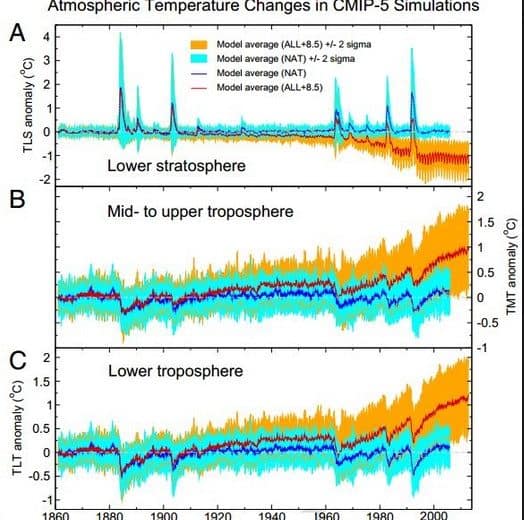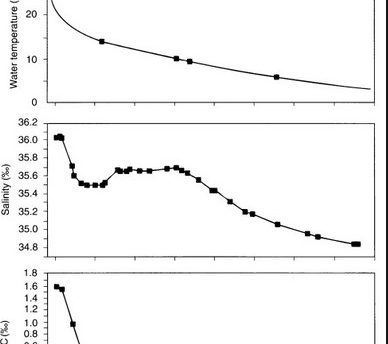
The changing composition of the atmosphere, including its greenhouse gas and aerosol content, is a major internal forcing mechanism of climate change. As we have seen in section 1.2.4, the Earth’s natural greenhouse effect (involving an increase in the downward energy flux) plays an important role in the regulation of the global climate. Obviously, then, changes in the atmospheric concentrations of greenhouse gases will modify the natural greenhouse effect, and consequently affect global climate.
Changes in the greenhouse gas content of the atmosphere can occur as a result of both natural and anthropogenic factors, the latter which has received considerable attention in the last 20 years (see chapter 5). Mankind, through the burning of fossil fuels, forest clearing and other industrial processes, has increased the amount of carbon dioxide and other greenhouse gases since the eighteenth century.
Natural changes in greenhouse gas concentrations can occur in numerous ways, most often in response to other primary forcing factors. In this sense, as with ocean circulation changes, such forcing should be more strictly regarded as secondary forcing or feedback. The role of feedback in global climate change is examined in the next section. Changes in atmospheric CO2 and methane (CH4) have been associated with transitions between glacial and interglacial episodes (Barnola et al., 1987; Neftel et al., 1988; Stauffer et al., 1988). Much of the empirical evidence suggests that these changes lag behind the climate signal, and must therefore act as feedback mechanisms to enhance climate change rather than as primary forcing mechanisms (Genthon et al., 1987; Lorius et al., 1990).
Changes in the atmospheric content of aerosols, again both natural and anthropogenic can act as climate forcing mechanisms, or more usually secondary feedback mechanisms. Increases in atmospheric turbidity (aerosol abundance) will affect the atmospheric energy budget by increasing the scattering of incoming solar radiation (see section 1.2.4). Atmospheric turbidity has been shown to be higher during glacial episodes than in interglacials (Legrand et al., 1988; Petit et al., 1990), with a consequent reduction in direct radiation reaching the Earth’s surface. Such a situation will enhance the cooling associated with glacial periods.




Leave a Reply